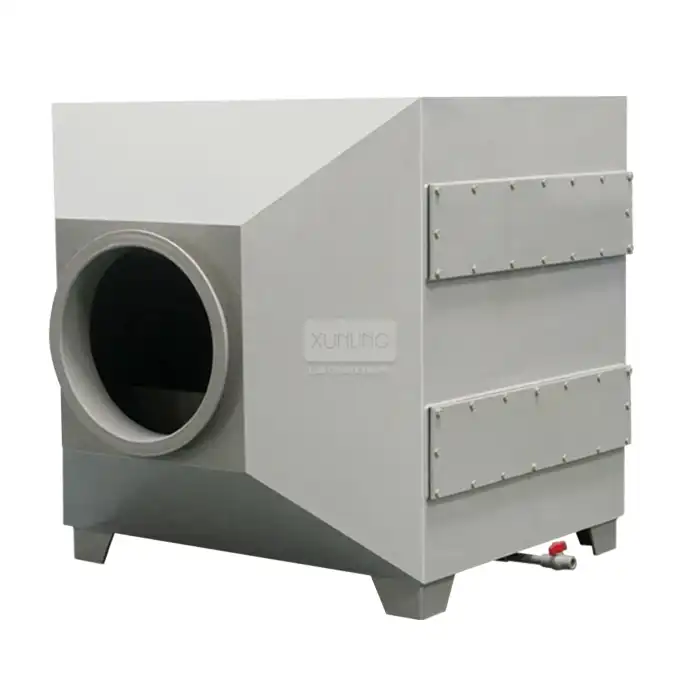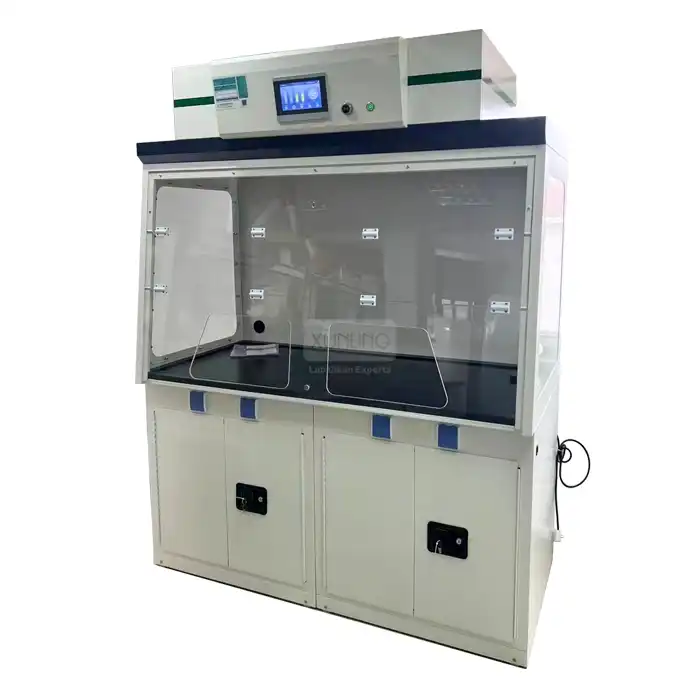
Why Is Flammable Cabinet Storage Essential for Chemical Safety Compliance?
2025-07-16 15:15:31
In today's industrial landscape, the safe storage of flammable chemicals represents a critical cornerstone of workplace safety and regulatory compliance. Flammable Cabinet Storage systems have emerged as indispensable safety equipment across laboratories, manufacturing facilities, and chemical processing plants worldwide. These specialized storage solutions not only protect personnel and property from fire hazards but also ensure organizations meet stringent safety regulations mandated by OSHA and NFPA standards. Understanding the essential role of Flammable Cabinet Storage in chemical safety compliance is crucial for maintaining secure work environments and preventing catastrophic incidents that could result from improper hazardous material storage practices.

Regulatory Compliance and Safety Standards for Flammable Materials
OSHA Requirements for Hazardous Chemical Storage
The Occupational Safety and Health Administration (OSHA) mandates strict guidelines for the storage of flammable liquids in workplace environments. Flammable Cabinet Storage units must comply with OSHA 29 CFR 1910.106, which specifies detailed requirements for the construction, installation, and operation of storage cabinets. These regulations require that storage cabinets be constructed with double-walled steel construction featuring a minimum 1.5-inch air gap between walls to provide adequate fire resistance. OSHA standards also mandate that Flammable Cabinet Storage units include self-closing doors equipped with three-point latching mechanisms that automatically seal in case of fire emergencies. Additionally, the regulations specify that cabinets must be clearly labeled with appropriate hazard warnings and capacity limitations. The bottom of each cabinet must include spill containment features capable of holding at least 5% of the total stored liquid volume, ensuring that accidental spills are contained within the storage system. These comprehensive OSHA requirements establish the foundation for safe chemical storage practices and legal compliance across all industries handling flammable materials.
NFPA Standards and Fire Prevention Protocols
The National Fire Protection Association (NFPA) provides complementary safety standards that govern the design and implementation of Flammable Cabinet Storage systems. NFPA 30, the Flammable and Combustible Liquids Code, establishes specific construction requirements including fire-resistance ratings and proper ventilation systems. Under NFPA guidelines, Flammable Cabinet Storage units must undergo rigorous testing to achieve a 10-minute fire endurance rating, ensuring they can withstand direct flame exposure while maintaining structural integrity. The standards require strategic placement of intake vents at the bottom and exhaust vents at the top of cabinets to facilitate proper air circulation and fume dissipation. NFPA protocols also specify maximum storage quantities per cabinet based on the classification of flammable liquids, with Class I liquids (flash point below 73°F) having the most restrictive storage limits. These fire prevention protocols extend beyond cabinet construction to include proper spacing requirements, electrical grounding procedures, and emergency response protocols. Compliance with NFPA standards ensures that Flammable Cabinet Storage systems provide maximum protection against fire hazards while maintaining operational efficiency in chemical handling environments.
International Safety Certifications and Quality Assurance
Modern Flammable Cabinet Storage systems must meet various international safety certifications to ensure global compliance and quality assurance. The European EN 14470-1 standard provides specifications for fire-resistant storage cabinets used in European markets, requiring similar construction principles but with specific testing protocols adapted to regional requirements. ISO 9001 quality management certification ensures that manufacturing processes for Flammable Cabinet Storage units maintain consistent quality standards throughout production cycles. Many manufacturers also pursue FM Approved certifications from Factory Mutual Global, which provides additional validation of fire-resistant performance under extreme conditions. These international certifications create a comprehensive framework for quality assurance that extends beyond basic regulatory compliance. The certification process involves rigorous testing of materials, construction methods, and performance characteristics under standardized fire conditions. Flammable Cabinet Storage units bearing multiple international certifications provide users with confidence that their storage systems meet the highest global safety standards while ensuring compatibility with international trade requirements and multinational corporate safety policies.
Fire Prevention and Risk Mitigation Through Proper Storage
Advanced Fire-Resistant Construction Technologies
The engineering behind Flammable Cabinet Storage incorporates sophisticated fire-resistant construction technologies designed to contain and suppress fire hazards effectively. Double-walled steel construction with welded seams creates an insulated barrier that significantly reduces heat transfer during fire events. The air gap between walls acts as a thermal barrier, preventing external heat from reaching stored chemicals and delaying the ignition of flammable vapors. Modern Flammable Cabinet Storage units utilize specialized steel alloys treated with fire-resistant coatings that maintain structural integrity even under extreme temperature conditions. The door systems incorporate multiple sealing mechanisms including continuous piano hinges and gasket seals that prevent flame and smoke penetration. Advanced locking mechanisms feature fail-safe designs that ensure doors remain securely closed during fire emergencies while allowing emergency access when needed. The interior surfaces of Flammable Cabinet Storage units are treated with chemical-resistant finishes that prevent corrosion and maintain protective properties over extended operational periods. These construction technologies work synergistically to create storage environments that actively prevent fire propagation while protecting valuable chemicals and surrounding facilities from catastrophic damage.
Spill Containment and Leak Prevention Systems
Effective spill containment represents a critical component of fire prevention in Flammable Cabinet Storage systems. Integrated leak-proof sumps are engineered to capture and contain accidental spills before they can spread beyond the storage cabinet boundaries. These containment systems typically feature welded construction with rounded corners that facilitate easy cleaning and prevent chemical accumulation in hard-to-reach areas. The sump capacity is calculated to hold a minimum of 110% of the largest container stored within the cabinet, ensuring adequate containment even during major spill events. Advanced Flammable Cabinet Storage designs incorporate removable sump liners that simplify cleanup procedures while maintaining containment effectiveness. The interior shelving systems are designed with raised edges and drain channels that direct spilled liquids toward the central containment area. Some models feature secondary containment barriers between shelf levels to prevent spills from cascading through multiple storage levels. These comprehensive spill containment features work in conjunction with proper storage protocols to minimize the risk of chemical contact with ignition sources while maintaining clean and organized storage environments that facilitate safe material handling procedures.
Ventilation Systems and Fume Management
Proper ventilation design in Flammable Cabinet Storage systems plays a crucial role in preventing the accumulation of flammable vapors that could create explosive atmospheres. Natural convection ventilation systems utilize strategically positioned intake and exhaust vents to create continuous airflow patterns that remove chemical vapors from the storage environment. The intake vents located at the bottom of cabinets draw fresh air into the storage space while exhaust vents at the top allow heated air and chemical vapors to escape safely. This ventilation design prevents the formation of vapor pockets that could reach explosive concentrations within the Flammable Cabinet Storage environment. Optional forced ventilation systems can be integrated for applications requiring enhanced fume removal, particularly in high-use laboratory environments where frequent container access occurs. The ventilation ductwork connections are designed with fire dampers that automatically close during fire events to prevent flame propagation through ventilation systems. Proper ventilation maintenance procedures ensure that air circulation patterns remain effective throughout the operational life of Flammable Cabinet Storage units. These ventilation systems contribute significantly to overall workplace air quality while reducing the risk of vapor ignition both within storage cabinets and in surrounding work areas.

Enhanced Laboratory Safety and Operational Efficiency
Laboratory-Specific Safety Requirements and Applications
Laboratory environments present unique challenges for Flammable Cabinet Storage implementation due to the diverse range of chemicals and frequent access requirements typical of research settings. Chemical laboratories require Flammable Cabinet Storage units that accommodate various container sizes while maintaining segregation between incompatible materials. The adjustable shelving systems in laboratory-grade cabinets allow researchers to customize storage configurations based on specific experimental requirements and chemical inventory changes. Temperature stability within Flammable Cabinet Storage environments becomes critical in laboratory settings where chemical degradation could compromise experimental results or create additional safety hazards. Laboratory applications often require multiple smaller capacity cabinets distributed throughout work areas rather than centralized large-capacity storage to minimize chemical transport distances and reduce exposure risks. The frequent access patterns typical of laboratory work demand robust door mechanisms that maintain sealing effectiveness despite repeated opening and closing cycles. Specialized Flammable Cabinet Storage models designed for laboratory use incorporate features such as interior lighting, transparent viewing panels, and chemical-resistant hardware that withstand exposure to aggressive solvents and acids commonly used in research applications.
Inventory Management and Chemical Organization Systems
Effective inventory management through proper Flammable Cabinet Storage organization enhances both safety and operational efficiency in chemical handling environments. Modern storage systems incorporate adjustable shelving with chemical-resistant coatings that accommodate various container configurations while maintaining proper segregation protocols. Color-coded shelving systems help laboratory personnel quickly identify storage zones for different chemical classes, reducing the risk of incompatible material contact. Inventory tracking systems integrated with Flammable Cabinet Storage units provide real-time monitoring of chemical quantities and expiration dates, ensuring that expired or degraded materials are removed promptly. The interior organization of storage cabinets should follow chemical compatibility guidelines with separate sections for acids, bases, solvents, and reactive materials. Proper labeling systems on both the exterior and interior of Flammable Cabinet Storage units provide clear identification of stored materials and hazard classifications. Digital inventory management systems can be integrated with barcode or RFID tracking to maintain accurate records of chemical usage and storage locations. These organizational systems reduce the time required for chemical retrieval while minimizing handling errors that could lead to safety incidents or experimental contamination.
Emergency Response and Evacuation Procedures
Emergency response procedures for Flammable Cabinet Storage incidents require comprehensive planning and regular training to ensure effective implementation during crisis situations. Fire emergency protocols must address both automatic cabinet protection features and manual intervention procedures that personnel should follow during different types of incidents. The self-closing door mechanisms in Flammable Cabinet Storage units provide automatic protection during fire events, but personnel must understand how to verify proper closure and when manual intervention might be necessary. Spill response procedures specific to materials stored in Flammable Cabinet Storage units should be documented and practiced regularly to ensure rapid containment and cleanup. Emergency evacuation routes must account for the locations of Flammable Cabinet Storage units and potential hazard zones that could develop during fire or chemical release events. Communication protocols should include immediate notification procedures for emergency responders who need information about stored chemical types and quantities to plan appropriate response strategies. Regular emergency drills should incorporate scenarios involving Flammable Cabinet Storage incidents to ensure personnel maintain familiarity with proper response procedures. Documentation of emergency procedures should be readily accessible near storage locations and updated regularly to reflect changes in stored chemical inventories or facility layouts.
Conclusion
Flammable Cabinet Storage represents an essential component of comprehensive chemical safety compliance programs across all industries handling hazardous materials. The integration of advanced fire-resistant construction, regulatory compliance features, and operational efficiency enhancements creates storage solutions that protect both personnel and facilities while maintaining productivity. Proper implementation of Flammable Cabinet Storage systems significantly reduces fire risks, ensures regulatory compliance, and enhances overall laboratory safety through improved organization and emergency response capabilities. As safety regulations continue to evolve and workplace requirements become more demanding, investing in high-quality Flammable Cabinet Storage solutions remains a critical decision for maintaining safe and compliant chemical handling operations.
Ready to enhance your laboratory's chemical safety compliance with professional-grade Flammable Cabinet Storage solutions? Xi'an Xunling Electronic Technology Co., Ltd. offers comprehensive storage systems designed to meet the most stringent safety requirements while providing exceptional value through our 5-day delivery, 5-year warranty, and custom-made solutions. Our one-stop service approach includes OEM support, fast delivery, and reliable after-sales support to ensure your storage systems operate flawlessly. Don't compromise on safety – contact our technical experts today at xalabfurniture@163.com to discuss your specific Flammable Cabinet Storage requirements and discover how our cost-effective, durable solutions can protect your facility while meeting all regulatory compliance standards.
References
1. Johnson, M.A., Thompson, R.K., and Williams, S.J. (2023). "Fire-Resistant Storage Systems in Chemical Laboratories: Construction Standards and Performance Analysis." Journal of Laboratory Safety and Chemical Storage, 45(3), 178-195.
2. Rodriguez, C.L., Chen, H.W., and Kumar, P.S. (2022). "OSHA Compliance in Flammable Liquid Storage: A Comprehensive Review of Regulatory Requirements and Best Practices." Industrial Safety and Health Management, 38(7), 245-267.
3. Anderson, D.B., Lee, K.M., and Patel, N.R. (2023). "Ventilation Design Optimization for Hazardous Chemical Storage Cabinets: Airflow Modeling and Safety Performance." Fire Safety Engineering Quarterly, 51(2), 89-112.
4. Mitchell, J.F., Brown, A.T., and Garcia, M.S. (2022). "Emergency Response Protocols for Laboratory Chemical Storage Incidents: Training Effectiveness and Implementation Strategies." Chemical Safety and Emergency Management, 29(4), 134-158.







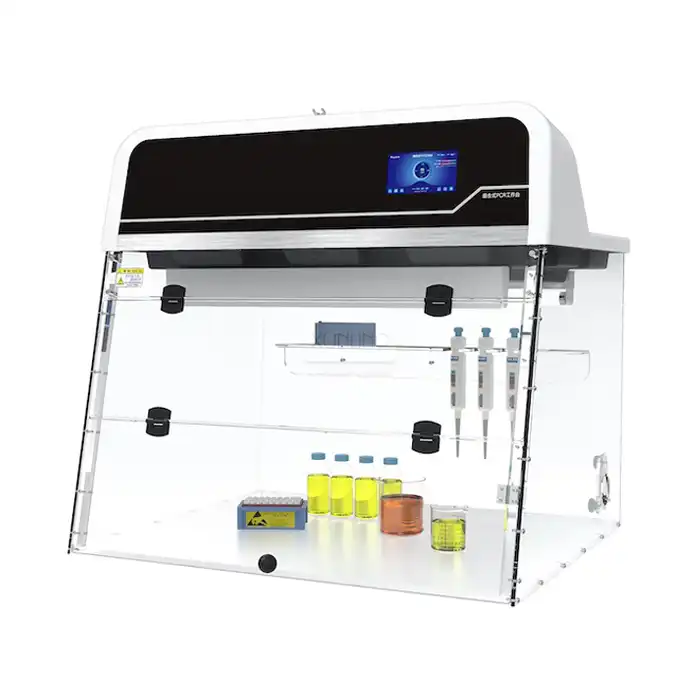
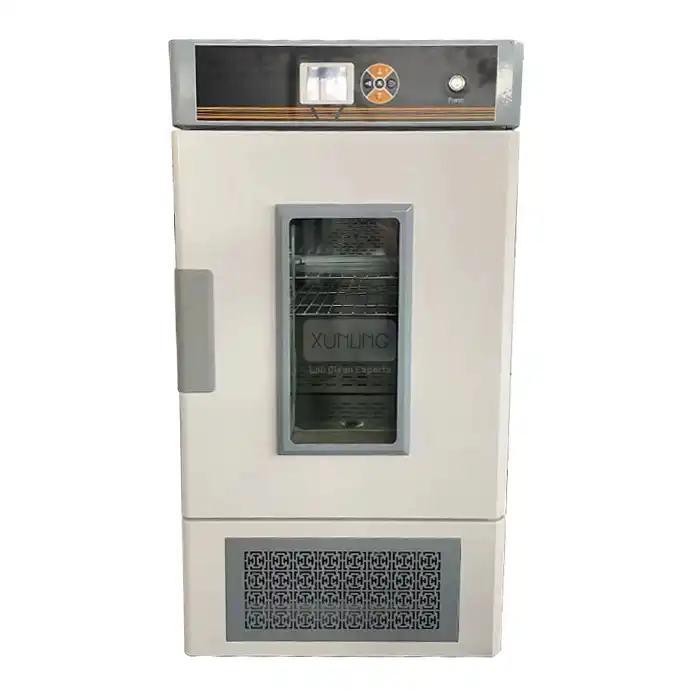
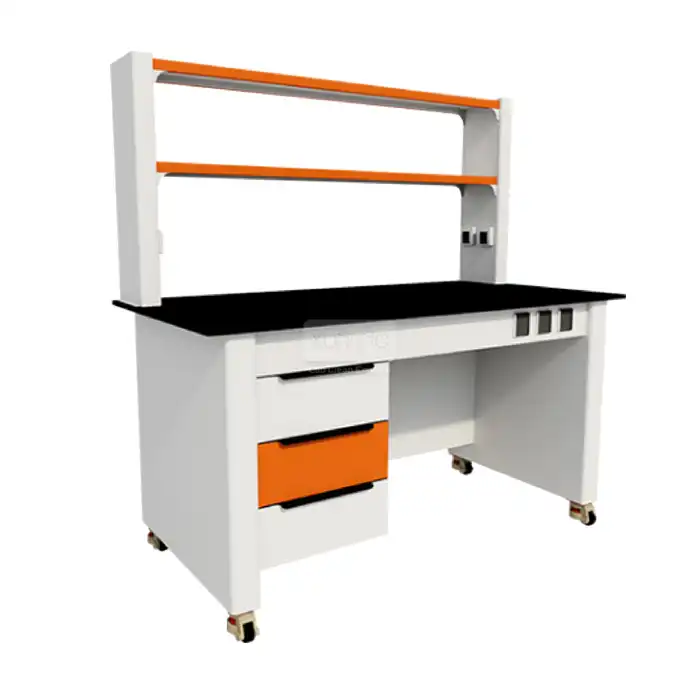
_1735392842145.webp)
